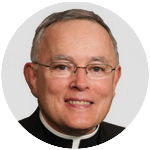
Archbishop Charles Chaput, O.F.M. Cap.
Here’s a simple fact: Today, anyone on the internet can get hardcore pornography for free. Even the most extreme content — no matter how abusive or strange, legal or illegal — can be had for a price. Most American boys encounter pornography by their early teen years. Millions of men, and increasingly women, seek out it addictively. Users make roughly 70 million porn web searches every day. Persons uneasy about their pornography habit can easily hide it from others. Explicit content is now so mainstream that it runs on network television.
The taste for pornography isn’t new. No society in history has ever been free of it. What is new are the technologies that enable the porn business to have massive scope, easy access from anywhere, and the shield of domestic privacy. Americans will never return to a world without widespread porn. Too many people make money from it: nearly $100 billion annually around the world and more than $13 billion here in the United States. Too many people see porn as a matter of personal choice. And too many people refuse to see its wider social impact; it’s a rare candidate for office who even mentions it as a problem.
[hotblock]
And yet, pornography literally changes the brain. Psychiatrist Norman Doidge describes the process in The Brain That Changes Itself. Porn impacts the part of the brain related to exciting pleasure, not satisfying it. In fact, denying satisfaction is part of pornography’s power. “[Porn’s] neurochemistry is largely dopamine-related, and it raises our tension level,” he notes. “Pornography, by offering an endless harem of sexual objects, hyper-activates the appetitive system” and actually rewires the brain. It creates what he calls “maps” that the user wants to keep activated. Doidge compares men using pornography to lab rats in an experiment, pressing a bar to get another shot of dopamine. They’ve “been seduced into pornographic training sessions that [meet] all the conditions required for plastic change of brain maps.”
Internet pornography also leads users to the content most especially addicting for them. All persons, Doidge notes, have sexual triggers, sexual acts that uniquely excite them, often much darker than anything they imagined. In the past, most men could go through life without ever finding those triggers. Today a man clicking through porn sites will eventually stumble on them, with addictive results.
Here’s the point: Pornography damages more than the addict. It demeans and humiliates spouses. It destroys real intimacy. It reduces people — created in the image and likeness of God — to mere objects. And those are just the immediate human costs. The real impact is much wider.
The porn industry fuels and feeds on the exploitation of women and minors forced into “sex work.” Porn is also a major factor in divorce, infidelity, and breaking apart families. This in turn has a geometric effect. Children from broken families exhibit lower achievement in school, poorer emotional health, and higher levels of delinquency and incarceration. An intact marriage and family, in contrast, reduce the chance of a child growing up in poverty by 80 percent. A wide range of studies have shown that marital breakups increase poverty rates, teen pregnancy, crime, drug abuse and illness, and cost the American public scores of billions of dollars every year — and porn is a major, invisible trigger in the resulting cascade of pain.
On March 2-3, the Archdiocese will mark its first “Safe Haven Sunday.” It’s an effort by our local Church, in partnership with the organization Covenant Eyes, to help men and women protect themselves, their marriages, and their children, against the spread of pornography in their homes and relationships. To date, 55 of our parishes have signed up for Covenant Eyes resources. Key among those resources is the book Equipped: Smart Catholic Parenting in a Sexualized Culture.
Equipped includes instructions on how to join a free, opt-in email series. The series’ emails contain important video links to help parents strengthen their homes as safe havens, explaining the latest apps, Google Safe Search, YouTube Restricted mode, the risks of social media, and with tips on how to address online pornography. Implementation materials for local parishes and dioceses can be found at https://learn.covenanteyes.com/safe-haven-sunday/.
Finally, more information is always available at our Office for Life and Family at www.phillycatholiclife.org, or by phone at 215-587-0500.
Please join me in praying and working for the success of this good project.
***
(Listen to a podcast with Archbishop Charles Chaput on how Safe Haven Sunday can equip families to protect themselves from pornography and its effects.)



My daughter teaches Prep in a suburban parish, and Safe Haven will be this Sunday’s teaching. She wholeheartedly supports this initiative.